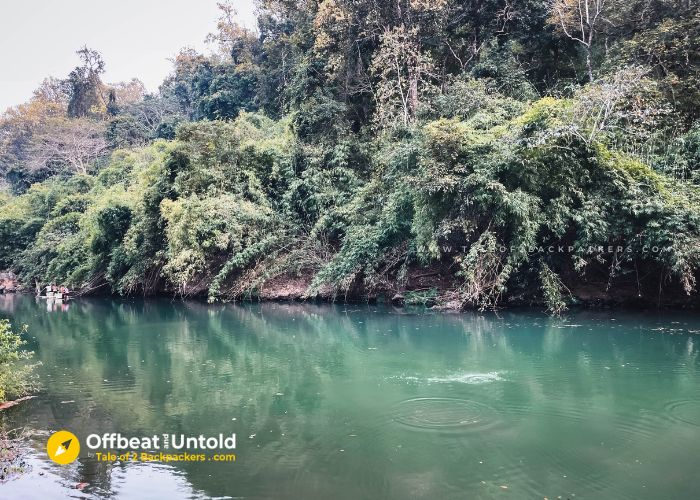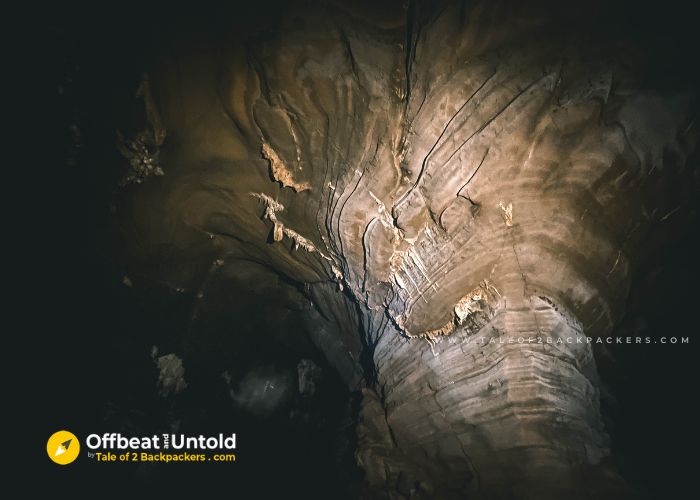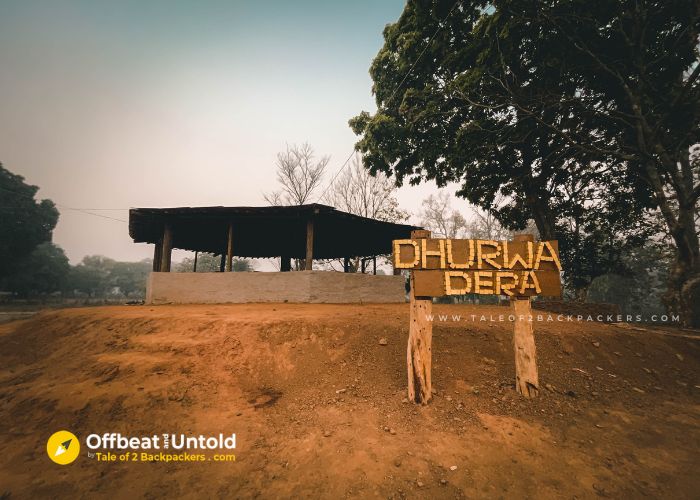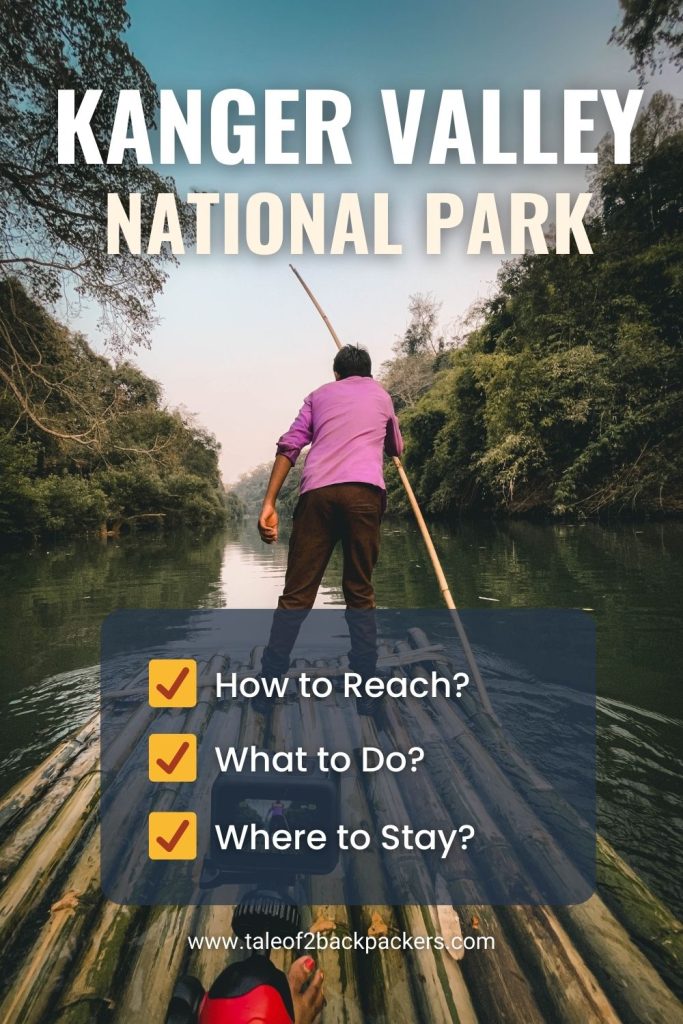About the Blog: Kanger Valley National Park is one of the biological hotspots in the Central India Regions. Visit this beautiful place in Bastar not only for wildlife and jungles, but also for its majestic waterfalls, mysterious limestone caves and the wonderful rural life around the forest area. Read the blog to know about Kanger Ghati National Park, what you can do there and other relevant information.
There were a few of us, listening with full attention to whatever Manisha had to say. We were inside the Kanger Valley National Park, also known as the Kanger Ghati National Park, while Manisha, our guide, spoke about the forest, its flora and fauna. Incidentally, Manisha was the only female nature guide at Kanger Valley National Park when we visited the place. Manisha was telling us about the Hill Mynas, also known as the Bastar Mynas and how the communities around the forest were involved in conservation measures.

It was around 8 am and the sun was peeping through the dense forest cover. And I was thinking about forests and caves and waterfalls of Kanger Valley National Park, located in the Bastar region.
Kanger Valley National Park
Kanger Valley National Park, also known as Kanger Ghati National Park is a moist deciduous forest spread over an area of 200 sq km in the picturesque Kanger Valley. The National Park was established in 1982 by the then Government of Madhya Pradesh and was designated a biosphere reserve.

Kanger Valley National Park is known for its heterogeneous land formations – having low and flat areas as well as steep slopes, plateaus and valleys. There are streams flowing inside this dense green forest. All these undulating terrains make the place an ideal habitat for diverse kinds of flora and fauna. The forest has huge sal, teak, bamboo and several other trees nurturing a variety of birds and reptile life.
Apart from wildlife, Kanger Valley National Park is also the home to some exceptionally beautiful limestone caves known for their geological formations and structures.
Bastar Myna and Myna Mitras
Kanger Ghati National Park is famous for the common hill myna, also known as the Bastar myna, which is endemic to the region. The Bastar Myna is the state bird of Chhattisgarh and is protected under the Schedule I of Wildlife Protection Act of 1972 as their population was on the decline.
However, a novel approach has been taken by the authorities of Kanger Valley National Park. They have involved the local residents from the surrounding villages to help the forest department to conserve and protect the birds. They were educated about the birds and were taught about the importance of wildlife in the region. Their main role is to monitor the behavior of the birds from feeding, perching and nesting, as well as stop anyone who wants to cause harm to these birds. These selected few are now known as Myna Mitras (friends of Myna) who help in protecting the Myna and also serve as guide to the tourists.

Wildlife at Kanger Valley National Park
Apart from Mynas, Kanger Valley National Park also has around 200 species of birds. A survey has revealed that the unique landscape of Kanger Valley National Park can potentially host species found in the Himalayas, the Northeast, the Eastern and Western Ghats.
Kanger Valley National Park does not have a tiger population, but it is the habitat of mammals like leopards, Malabar Giant Squirrel, chital, sloth bears, gray langurs, Indian wolf and rhesus macaques among others. The Kanger Nullah is also an important habitat for the mugger crocodiles. The Sand banks at Bhainsa Darha located on the eastern part of the Kanger Ghati National Park are the basking places for these crocodiles.
There are a few caves inside the Kanger Valley National Park like Kutumsar, Dandak and Kailash Caves. The cave ecosystem also supports a variety of creatures like bats, freshwater crabs, frogs and some cave fishes.

Where is Kanger Valley National Park Located?
Kanger Valley National Park is located about 25 km south-west of Jagdalpur, the headquarters of Bastar district on the Jagdalpur -Darbha Road.
The entrance to Kanger Valley National Park can be seen from the conspicuous entrance gate beside the main road.
Exploring Kanger Valley National Park
While a Gypsy safari is the best way to explore the depths of the jungles and watch the wildlife, there are several other attractions in and around Kanger Ghati National Park. There are water reservoirs, waterfalls and some amazingly beautiful caves that you should not miss. And then there are the small villages around the forest area. A few of these villages have eco homestays where you can get a taste of the rural life of Bastar, along with some delicacies of Bastar region.
So here is a list of things to do in and around Kanger Valley National Park.
Visit the Mighty Tirathgarh Waterfall

Tirathgarh Waterfall is perhaps one of the most beautiful waterfalls in the Bastar region. The waterfall, constituted from the Kanger River and its tributaries drop from a height and looks simply breathtaking. The waterfall is perennial, but the best views are seen during and just after the monsoon season.
Explore the Caves of Bastar
Kotumsar Cave

Kotumsar Cave is a wonder of nature. Located deep inside the Kanger Valley National Park, about 3 km from Kotumsar village, the limestone cave is famous for its stalactite and stalagmite formations. The cave was excavated in 1958 by Professor Shankar Tiwari. The cave is 330 m long and 40 meters deep and is located near the Kanger River basin.
The entrance to the cave is imposing. There is a narrow vertical fissure within the wall of a hill that serves as the entrance to a tunnel. There are stairs constructed to help entering the cave. But the entrance is quite narrow and at some point, you have to crawl and enter inside the cave. This is nothing like the broad entrance of the Baratang Cave in Andamans or the Siju Caves in Meghalaya.

The limestone formation inside the cave is spectacular. There are no lights inside the cave and you have to carry a torch or headlamp with you. There are several passages inside the cave, but you should not venture there without the help of guides.
The oxygen levels inside the cave are low. So those who have claustrophobia, please make an informed decision before entering the cave.
Dandak Cave
Dandak Cave was discovered in 1995 and is located near the Kanger River inside the Kanger Valley National Park. The cave has two chambers connected by a very narrow passage. This cave also looks quite ethereal with its limestone formations. You have to climb around 250 steps to enter the cave! I am not really sure about the step counts, but there were many.

There is a stalactite Shivalings with a perennial stream flowing across it, known as Patal Linga. Exploring Dandak is said to be challenging. You have to crawl for about 2 meters through the narrow passage to reach the chambers. Infact, the word “Dandak” means punishment.
Kailash Cave
Kailash Cave is one of the oldest caves inside Kanger Ghati National Park, but it was discovered only in 1993. It is located on the Lower Kanger Road near Milkulwada village. You have to climb up around 280 steps before reaching the entrance of the cave. Steps are also made to go inside the cave. Once you are inside the cave, you will feel like you have reached a royal banquet hall. There are various rock formations inside this cave, but they are different from that of Kutumsar Cave.
Visit the peaceful Kanger Dhara

Kanger Dhara or Kanger Waterfall might not be as huge as Tirathgarh Waterfall, but it has its own charm. Infact, I absolutely loved this place because of its serenity and simplicity. Situated inside the Kanger Valley National Park, the Kanger river flows through the rocky structures before falling from a height of 30 feet creating the beautiful Kanger Dhara. It then forms a stream flowing through the rocks.
We had visited Kanger Dhara early in the morning, just when the sun was going up. I was overwhelmed by the serenity the place provided. Sitting on the rocks I kept looking at the waterfall and the forest and I was reminded about the Weinia Waterfall at Nongkhnum Island in Meghalaya. I had a similar experience there.
Go for a Gypsy Safari

To explore inside the forest, you have to take a gypsy from the entrance of the Kanger Valley National Park. The tourists can go for a 3 to 4 hours gypsy safari either in the morning or afternoon. The safari timings are 6 to 11 am in the morning and 3 to 6 pm in the afternoon. The forest guides are mainly from the local tribal communities who have been trained to guide the tourists.

Cost of the Safari
Safaris start from Park gate and cost Rs 1500 for six people. For solo trips, charges are Rs 1100 for a vehicle.
The entry fee to the park is INR 25 for Indians and INR 150 for foreign tourists. The Guide fee is INR 150.
Stay at an eco-homestay in a nearby village

This was one of my favorite experiences around Kanger Valley. A few eco-stays and homestays are found in the villages around Kanger Valley National Park. Aamchi Lado in Manjhipal, Dhurwa Dera in Dhudmaras village and Bastar Tribal Homestay in Bodal village are a few homestays that will give you an authentic taste of Bastar rural life. You can stay at any of these homestays, go for a village walk and enjoy the delicious Bastar cuisine. You can also taste Chapda or the red ant chutney, Mahua wine and other local drinks here.
In Conclusion
Kanger Valley National Park is not only about wildlife. It is a place to experience nature and its wonders. There are caves to explore, waterfalls to marvel at, birds to watch and wonderful people to meet. I do not feel only a gypsy safari does justice to this wonderful place in Chhattisgarh. Experience the jungles, stay at a local homestay and enjoy the quiet Bastar rural life, even if it is for a day. I am sure you will not regret it.

Kanger Valley National Park Travel Guide
How to Reach Kanger Ghati National Park?
To reach Kanger Ghati National Park, you have to first reach Jagdalpur.
Jagdalpur has an airport, but it is not fully operational for civilians. Only a handful of flights are available from Raipur and Hyderabad. Kanger Valley National Park is about 25 km from Jagdalpur and will take about an hour to reach.
By Train:
Jagdalpur Railway Station is the nearest railway station. Jagdalpur is connected byrailways from Howrah, Vishakapatnam and a few other places.
How to reach from Raipur?
Swami Vivekananda Airport at Raipur is almost 310 km from Jagdalpur. It takes about an hour by flight and 6 to 7 hours by road to reach Jagdalpur from Raipur.
You can also get local buses from Raipur to Jagdalpur.
What is the Best Time to visit?
The best time to visit Kanger valley National Park is between October to March. During this time, the weather remains cooler. Nights will, however, be cold and chilly.
The summer months between April to June are the hottest months in the region.
Monsoons make the place look beautiful. The waterfalls are in their full glory. However, the park remains closed if there are heavy rains.
Where to Stay?
You can stay at Jagdalpur town. It has several hotels catering to various budgets.
I would, however, recommend you to stay at the homestays near the national park, where you will get to experience a slice of Bastar rural life. Aamcho Laadi Homestay in Manjhipal village, Bastar Tribal Homestay at Bodal and Gudiapadar villages, Dhurwa Dera at Dhudmaras are all beautiful homestays with great hospitality.
You can also do camping at the nature camps located in Tirathgarh and Kotumsar villages. These nature camps are run by the local communities.
Hope you like this blog on Kanger Ghati National Park. If you liked this and found it useful, please share it with your family, friends and neighbours.
Pin it for a later read!




0 Comments